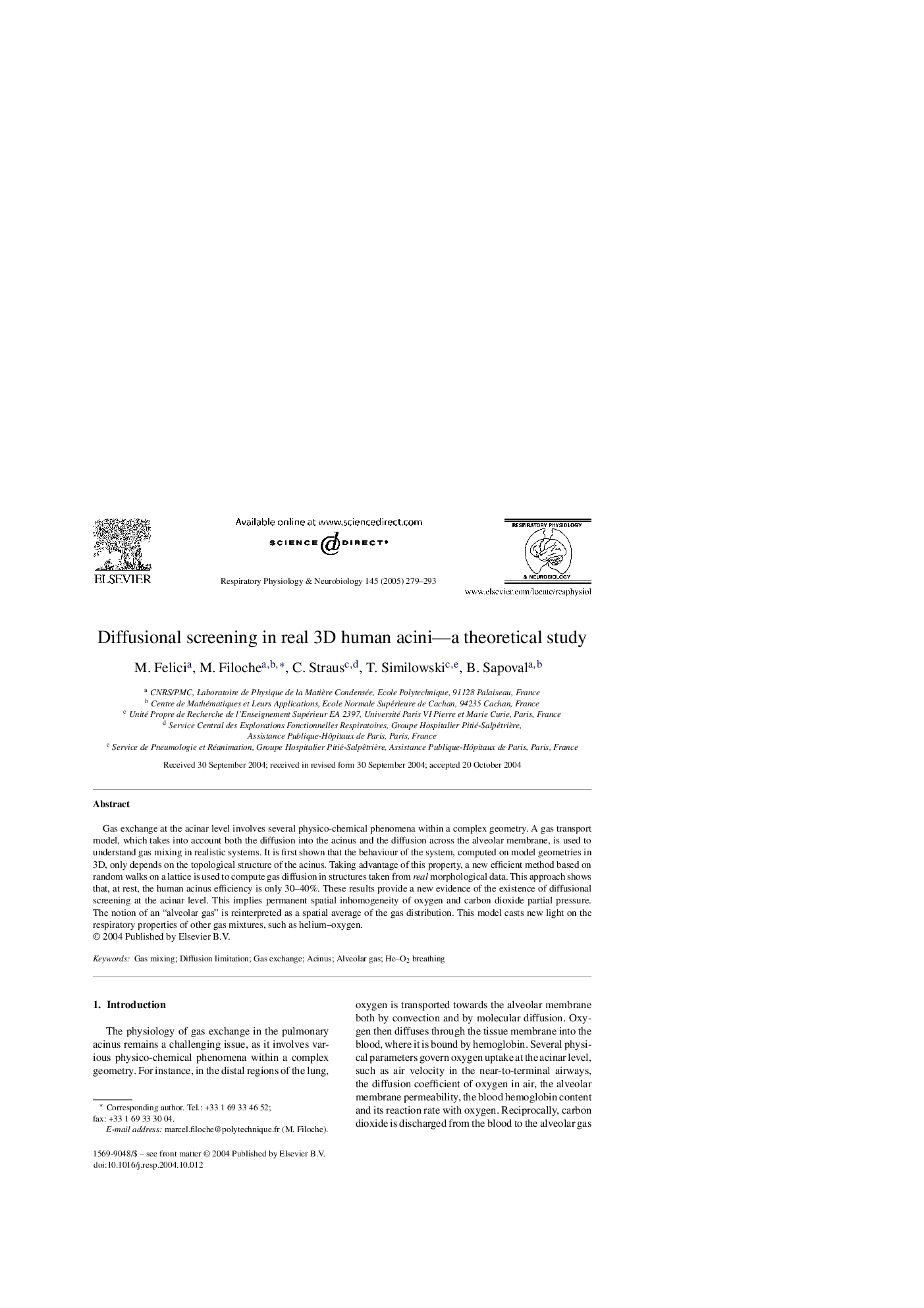| Article ID | Journal | Published Year | Pages | File Type |
|---|---|---|---|---|
| 9152282 | Respiratory Physiology & Neurobiology | 2005 | 15 Pages |
Abstract
Gas exchange at the acinar level involves several physico-chemical phenomena within a complex geometry. A gas transport model, which takes into account both the diffusion into the acinus and the diffusion across the alveolar membrane, is used to understand gas mixing in realistic systems. It is first shown that the behaviour of the system, computed on model geometries in 3D, only depends on the topological structure of the acinus. Taking advantage of this property, a new efficient method based on random walks on a lattice is used to compute gas diffusion in structures taken from real morphological data. This approach shows that, at rest, the human acinus efficiency is only 30-40%. These results provide a new evidence of the existence of diffusional screening at the acinar level. This implies permanent spatial inhomogeneity of oxygen and carbon dioxide partial pressure. The notion of an “alveolar gas” is reinterpreted as a spatial average of the gas distribution. This model casts new light on the respiratory properties of other gas mixtures, such as helium-oxygen.
Related Topics
Life Sciences
Biochemistry, Genetics and Molecular Biology
Physiology
Authors
M. Felici, M. Filoche, C. Straus, T. Similowski, B. Sapoval,
